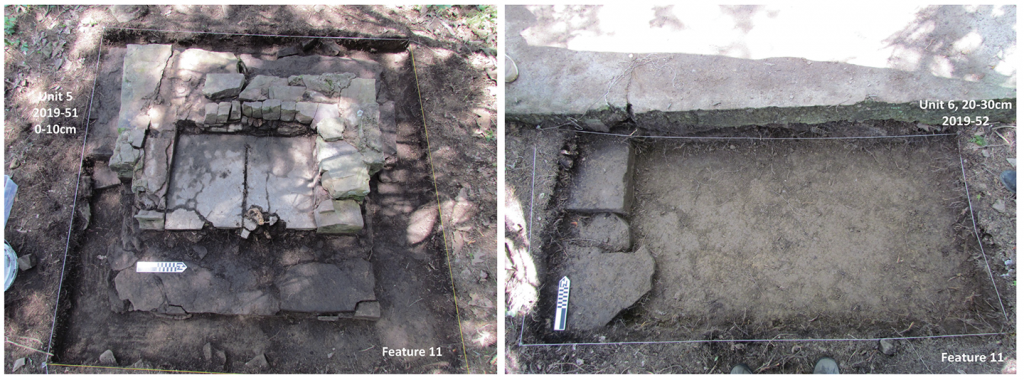Field Work, May 10-28, 2021
From May 10-28, 2021 University of Central Arkansas students will resume archaeological research at Camp Halsey (3FA313) as part of the Field Archaeology course offered at UCA. The UCA field course is part of a long-term collaborative project between UCA and the Faulkner County Museum to map, evaluate, and document historical and archaeological resources in Faulkner County. This larger project, and the work at Camp Halsey, is organized into three themes that serve to frame inquiries: site administration and management, pedagogy and public archaeology, and research.
Fieldwork during the May Intersession will build upon the 2019 season (2020 was canceled due to COVID) using a multi-disciplinary systematic approach to address specific research questions related to social, historical, economic, and political aspects of the camp. Students will be learning several archaeological field methods during their time in the field. Broadly, they will be collecting three types of data from the site: resistivity data (terrestrial geophysics), drone (aerial photography), and feature excavations (archaeological) with associated artifacts.
We will be using electrical resistivity to continue mapping the large open space where the barracks were located. In 2019, the mapping of differential soil compaction in the former location of the barracks proved to be productive when compared to the location of buildings visible in the 1936 aerial image. Students will gain experience using a RM Frobisher TAR-3 resistivity and learn skills related to site survey and field data collection, applied physics, resistance, and processes of landscape use and modification.

New to the 2021 season is the use of a DJI Mini 2 Drone to conduct low-altitude aerial photography of the landscape and visible site features. It is hoped that the collection of comprehensive aerial imagery will be useful in identifying variation in surface vegetation that corresponds to buried subsurface archaeological deposits. This could be particularly useful over the road and barracks area to better understand spatial relationships. Students will gain experience with low-altitude survey methods and the use of aerial photography in archaeological applications.
Finally, we will resume excavating Feature 11, the location of the officer’s quarters. The 1934 inventory of buildings lists “Qtrs for Officers w/screen porch” as a rigid frame structure with five rooms and a capacity of four individuals. Water and sewer connections are listed. In 2019, two excavation units were opened. One unit (Unit 5) focused on exposing and mapping the base of the chimney that was attached to the structure. In this unit were found several glass objects and a very unique CCC camp token. A second unit (Unit 6) was situated on the edge of the cement slab that served as the porch. In this unit students documented the entrance to the officer’s quarters, along with parts associated with the screen door (nails, door springs, etc.). Students will gain experience in traditional excavation methods and learn skills related to developing and refining research questions as data are collected, the importance of clear and concise field note taking, the process of creating profile and plan sketches, and learn how field artifacts are assigned provenience and collected (tagged and bagged) in the field (in accordance with Arkansas Archeological Survey statewide standards).

During the third week, students will gain experience in archaeological lab methods and learn skills related to artifact cleaning, cataloging, and accessioning. They will be exposed to the process of conducting a preliminary analysis using a handful of artifacts, methods associated with digitizing field sketches, remote sensing data processing, and the use of primary historical documents to supplement artifact data.
Students who wish to address a specific research question will be encouraged to generate an analysis for publication in the Journal of Undergraduate Research in Anthropology (JURA).